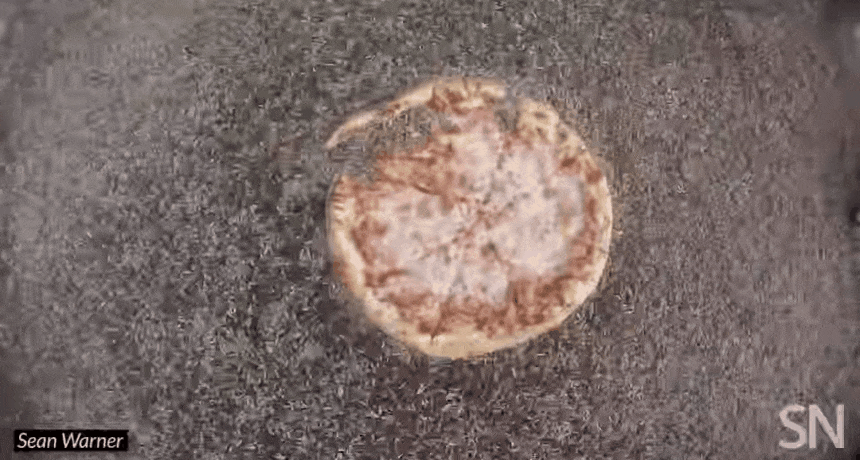How these maggots efficiently demolish a pizza
Masses of the larvae create a living fountain that knocks slowpokes up and away

Thousands of fly maggots can demolish an entire pizza in about two hours.
Sean Warner
By Susan Milius
It all started with the can’t-tear-your-eyes-away video of maggots devouring a pizza. The black soldier fly larvae downed the 41-centimeter (16-inch) pie in just two hours. Watching sped-up action of the writhing mass inspired Olga Shishkov in Atlanta. The Georgia Tech mechanical engineer wondered what made these insects such champions of collective feeding.
What she discovered: They make a living fountain.
A Hermetia illucens larva doesn’t eat steadily, Shishkov found. It feeds for about five minutes, then may rest for another five. But it can be one of thousands of such larvae. And there will always be some in that group pushing forward. They will shove the resting larvae upward. These will then fall back like water in a fountain. This motion keeps the non-eaters from slowing down the feast.

Shishkov and her colleagues described the behavior February 6 in the Journal of the Royal Society Interface.
Shishkov borrowed her analytical techniques from the study of fluids. For instance, she treated larvae as particles moving with a current. Then she looked for overall patterns of flow in the writhing mass of up to 10,000 insects. As she tracked the directions larvae wriggled, she saw that a fountainlike flow develops around a chunk of food.
As larvae took a break from binging, the hungry crowds behind shoved them upward. Those at the top then fell away from the cliff-face of food. This up-and-out push let a larva eager to feed replace one that’s taking a break.
The frantic feeding of black-soldier-fly larvae isn’t just fun to watch. The maggots define “food” broadly. Pizza, garbage, animal waste — it’s all good. So people hoping to cut food waste may consider whether pushy maggots are the answer. Maybe they will gorge on what humans consider garbage. Later, those larval clean-up crews could be fed to chickens or other animals that people eat.
That’s certainly one reason to embrace a species that not only eats garbage but can handily murder a pizza. Also, Shiskov says, “They’re the cutest maggots I’ve ever seen.”
Science News/YouTube







